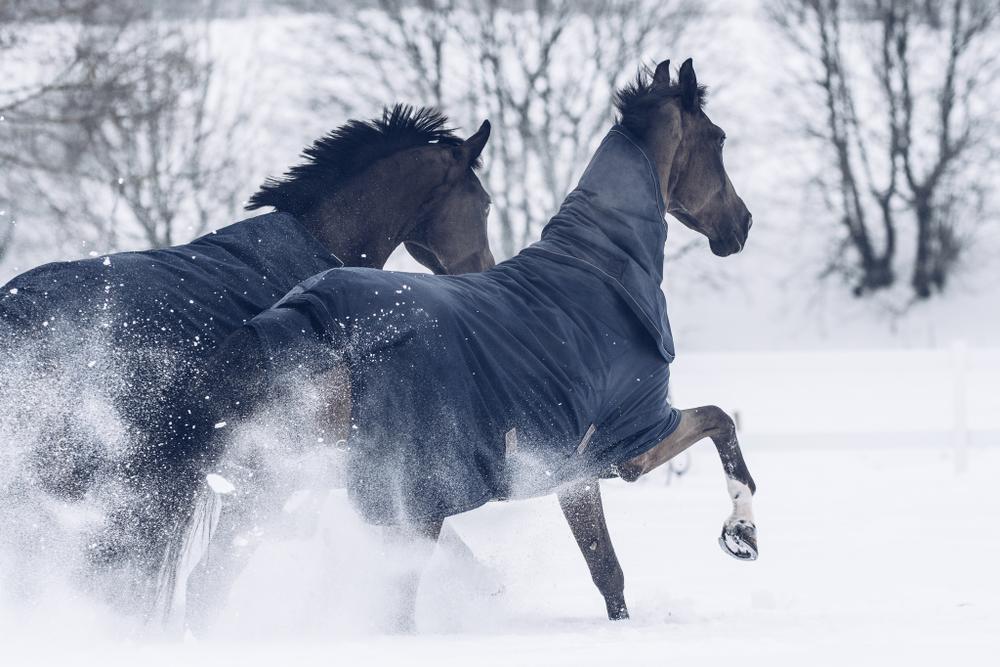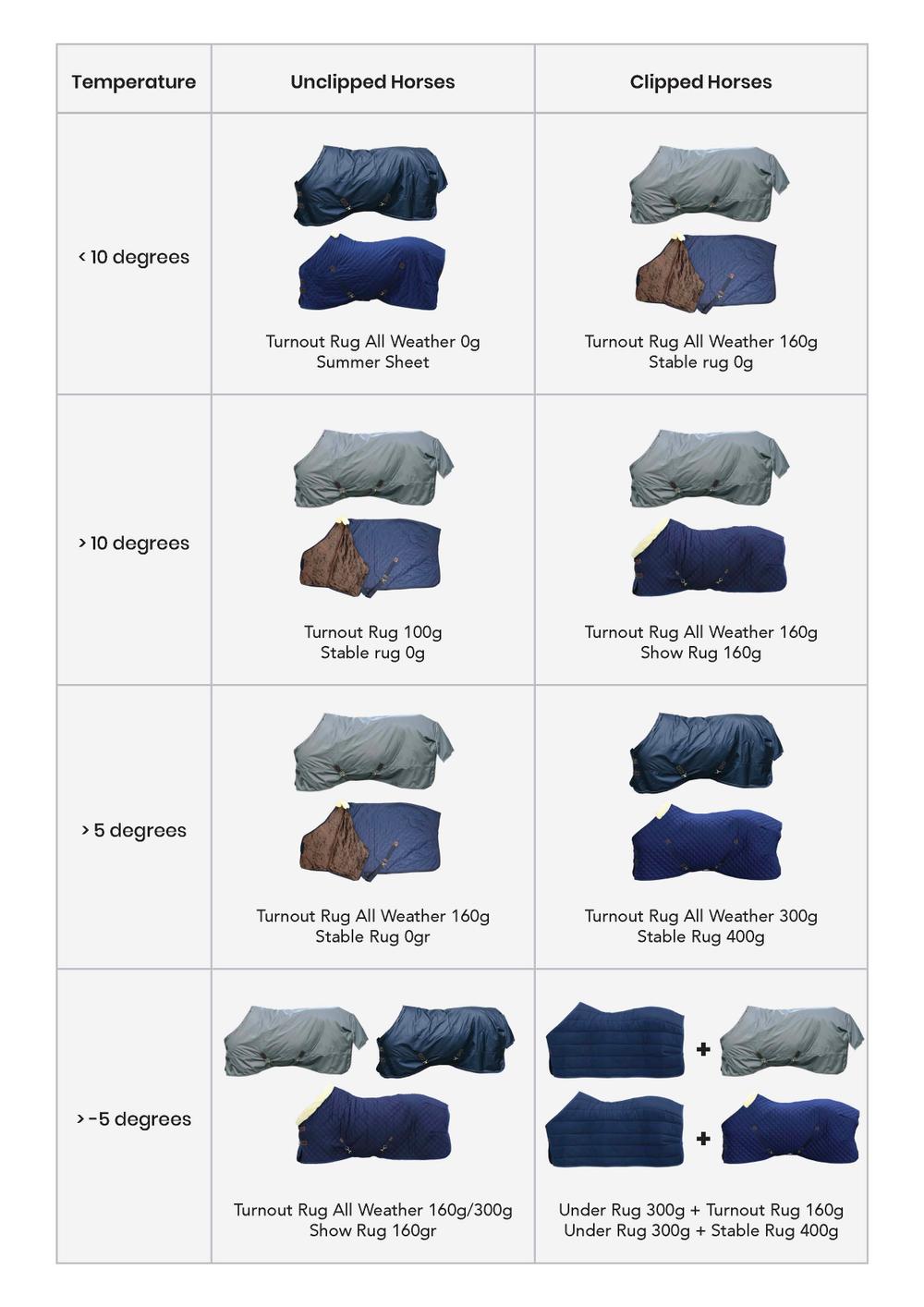
Temperature guide for rugging
When you take a look around at the stable nowadays, you notice a rug pop up here and there. Stop wondering if your horse needs one too. We’ve created a temperature guide with basics we think you should know when rugging a horse.
The range of rugs is immense. There are rugs for every occasion, and each rug has different features and technicalities. To know more about the different technicalities we’ve written a blogpost in the past talking about different terms you find when choosing a rug. In this blogpost we want to focus more on which rug you use at which temperature.
Factors that influence the horse’s temperature
The first and most important thing of this blog is that every horse is different. Just like humans some horses are colder than others. If you have 2 horses, it’s possible that one wears a 200g rug and is still a little warm while another horse needs 400g. This depends on age, weight and breed as well. A 25 years old horse is cold more easily than a 5 years old. An underweight horse needs some extra coverage too.
The temperature outside changes a lot, in the morning it could be sunny and the afternoon very windy and rainy. In fact, the morning and evening temperatures are about 7 degrees different than during midday. Check your horse often to make sure he has the right rug, and the temperature is enjoyable. When your horse is stabled, the temperature in the stable changes too but less frequent as the horse doesn’t have to face the wind, rain or other weather conditions. So, don’t forget to check the temperature of the stables too, and change rugs when needed.
It’s no surprise that clipped horses are colder than unclipped horses. As they have no natural protection, we need to give it to them. To help you select the right type of rug, we have created a chart with what rugs you use at different temperatures. This is an indication, so this can differ from every horse. You can find the temperature guide at the end of the blog post.
The effects of under rugging
An old saying is to feel the ears of the horse, if the ears feel cold your horse is cold too. This is unfortunately a myth. The best way to check if the horse is cold is to feel if the horse feels cold on the inside of the rug. You can notice that your horse is cold when he’s eating more, this is a natural way to keep his metabolism going. If the horses coat is standing up or he is shivering, he is probably cold too. Also, never put on a warmer rug if you are feeling cold. The way we feel temperatures is different than horses do. If the horse is cold, they can warm up themselves quite easily, however it’s better to have an enjoyable temperature for the horse. Make sure to provide shelter to your horse too, this will also help him getting warmer.
The effects of over rugging your horse
Over rugging might be more dangerous than you thought. Horses have a harder time cooling down than warming up. You can easily see if the horse is too warm when he’s sweating or breathing heavily. The sweat will appear behind the ears or under the rug and causes rubbing marks. Besides rubbing marks, the sweat can cause skin infections too. Another problem is that the horse gains weight because he does not need that much energy to stay warm. This will eventually cause obesity.

